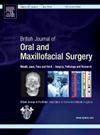The efficacy of indocyanine green fluorescence in facilitating thoracic duct visualisation and mitigating injury in cervicothoracic surgery: a systematic review and meta-analysis
IF 1.9
4区 医学
Q3 DENTISTRY, ORAL SURGERY & MEDICINE
British Journal of Oral & Maxillofacial Surgery
Pub Date : 2025-06-01
DOI:10.1016/j.bjoms.2025.03.013
引用次数: 0
Abstract
Chyle leak following injury to the thoracic duct (TD) is an uncommon but serious complication of cervicothoracic procedures, including neck dissection and oesophagectomy, and has significant morbidity and mortality. We aimed to investigate the efficacy of indocyanine green (ICG) fluorescence in facilitating intraoperative TD visualisation and preventing chyle leaks. A systematic review and meta-analysis was conducted following the Preferred Reporting Items for Systematic Reviews and Meta-Analyses (PRISMA) standards for studies that assessed ICG for TD visualisation in cervicothoracic procedures. The primary outcome measure was TD visualisation using ICG. Secondary outcomes included rates of chyle leak detection, visualisation rate in white light, and time from injection to visualisation. Twelve studies enrolling 475 subjects met the inclusion criteria. The TD visualisation rate with ICG was 93.3% (SE 0.013, p < 0.001) compared with 54.3% (SE 0.065, p < 0.001) in white light. Detection rates for intraoperative chyle leak were higher using ICG compared with no ICG use: 74% (SE 0.047, p < 0.001) vs 17.5% (SE 0.086, p = 0.043), respectively. ICG reduced rates of postoperative chyle leak from 10.1% (untransformed proportion metric: 0.101 (0.045, 0.157), p < 0.001) to 3.9% (SE 0.021, p = 0.061). Mean time from ICG injection to TD visualisation was 83.94 minutes (p < 0.001). ICG offers an effective method of TD visualisation in cervicothoracic surgery. It can reduce rates of chyle leak and mitigate adverse sequelae from inadvertent duct injury. High-quality randomised controlled trials are required to improve the evidence base.
吲哚菁绿荧光在颈胸外科手术中促进胸导管显像和减轻损伤的疗效:一项系统综述和荟萃分析。
胸导管损伤后乳糜漏是颈胸手术(包括颈清扫术和食道切除术)中一种罕见但严重的并发症,发病率和死亡率都很高。我们的目的是探讨吲哚菁绿(ICG)荧光在促进术中TD显像和防止乳糜漏中的作用。根据系统评价和荟萃分析首选报告项目(PRISMA)标准,对评估ICG在颈胸手术中TD可视化的研究进行了系统评价和荟萃分析。主要结果测量是使用ICG进行TD可视化。次要结果包括乳糜漏检出率、白光下显像率和注射到显像的时间。12项纳入475名受试者的研究符合纳入标准。ICG的TD显像率为93.3% (SE 0.013, p
本文章由计算机程序翻译,如有差异,请以英文原文为准。
求助全文
约1分钟内获得全文
求助全文
来源期刊
CiteScore
3.60
自引率
16.70%
发文量
256
审稿时长
6 months
期刊介绍:
Journal of the British Association of Oral and Maxillofacial Surgeons:
• Leading articles on all aspects of surgery in the oro-facial and head and neck region
• One of the largest circulations of any international journal in this field
• Dedicated to enhancing surgical expertise.

 求助内容:
求助内容: 应助结果提醒方式:
应助结果提醒方式:


